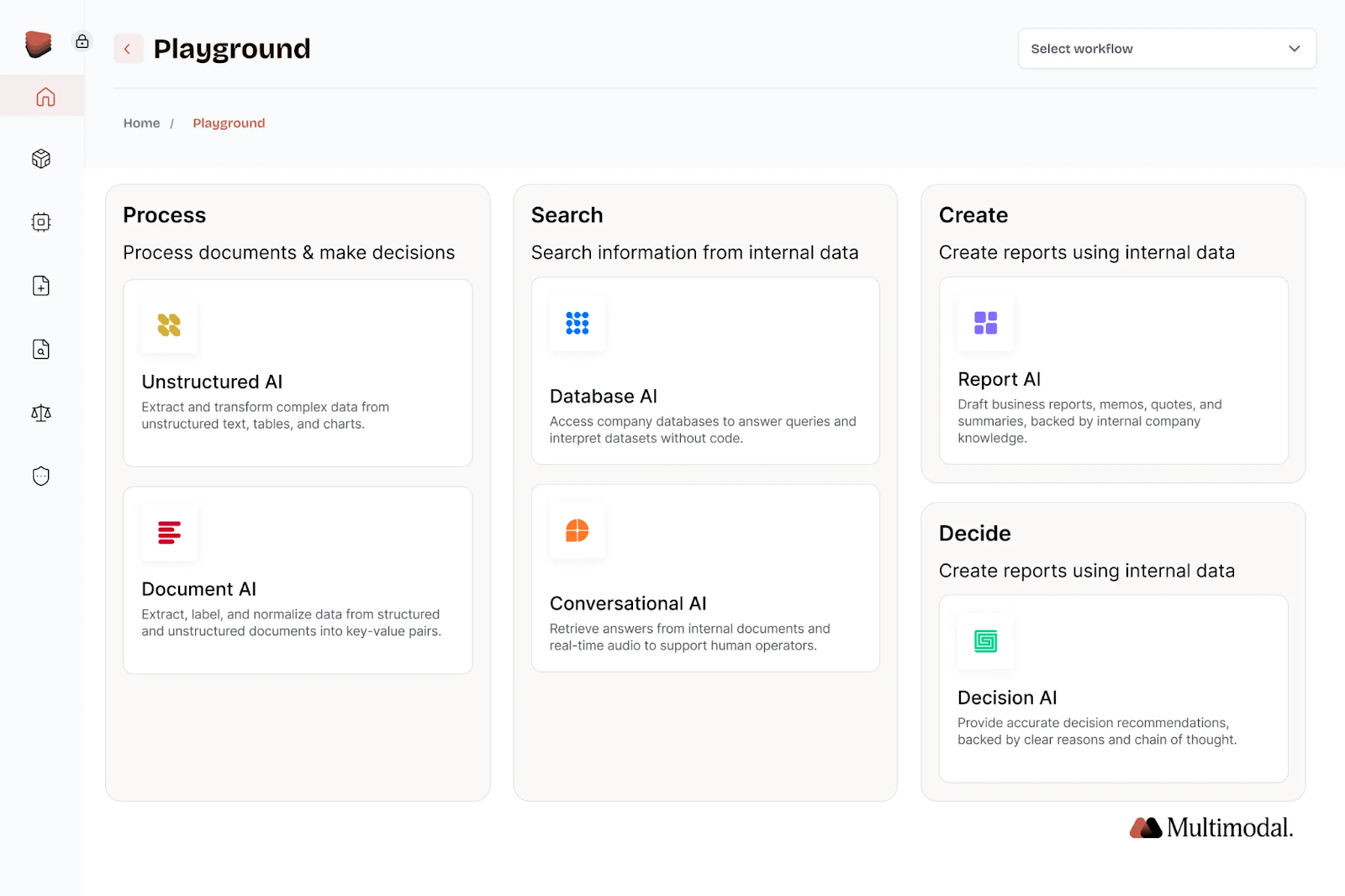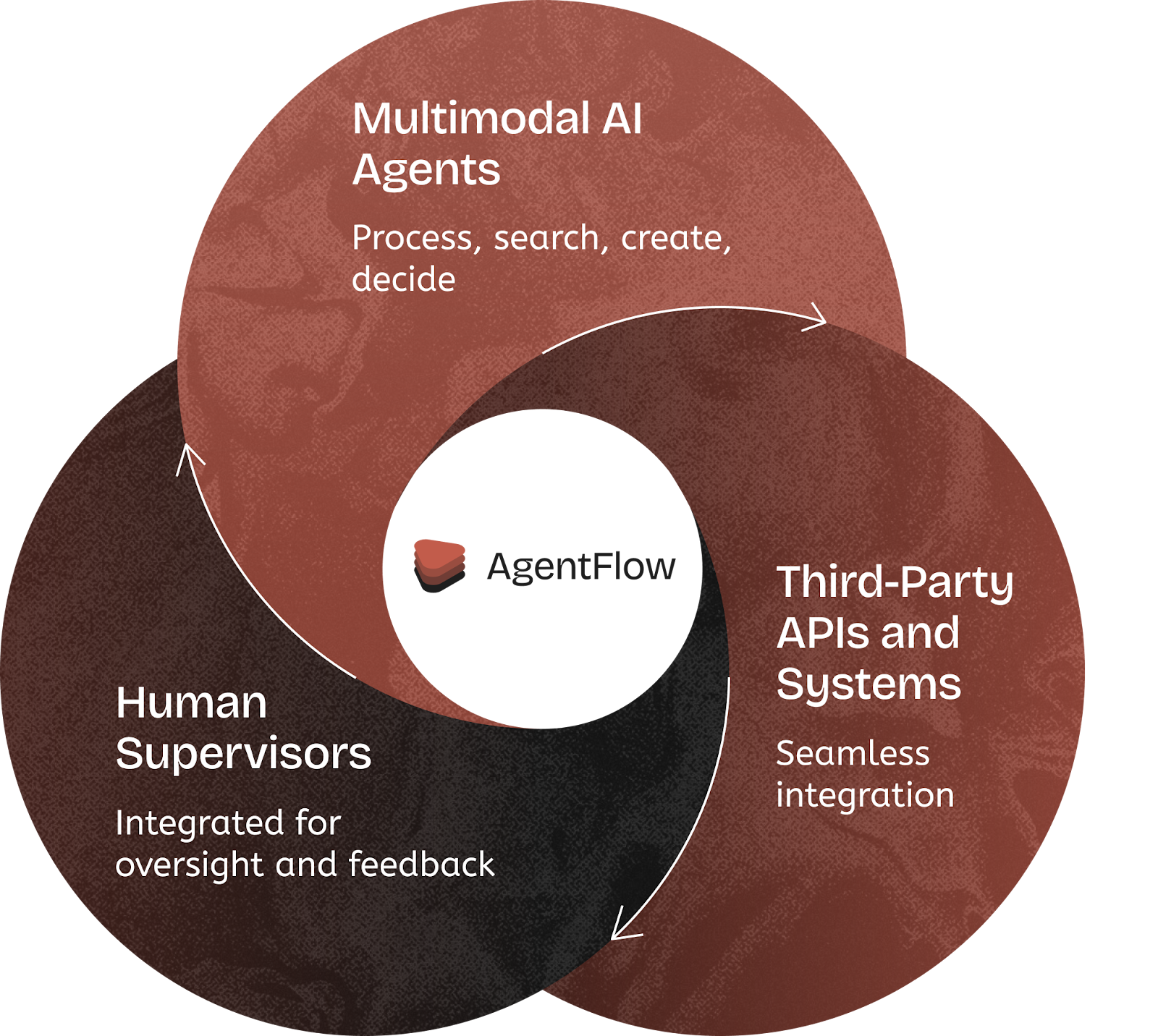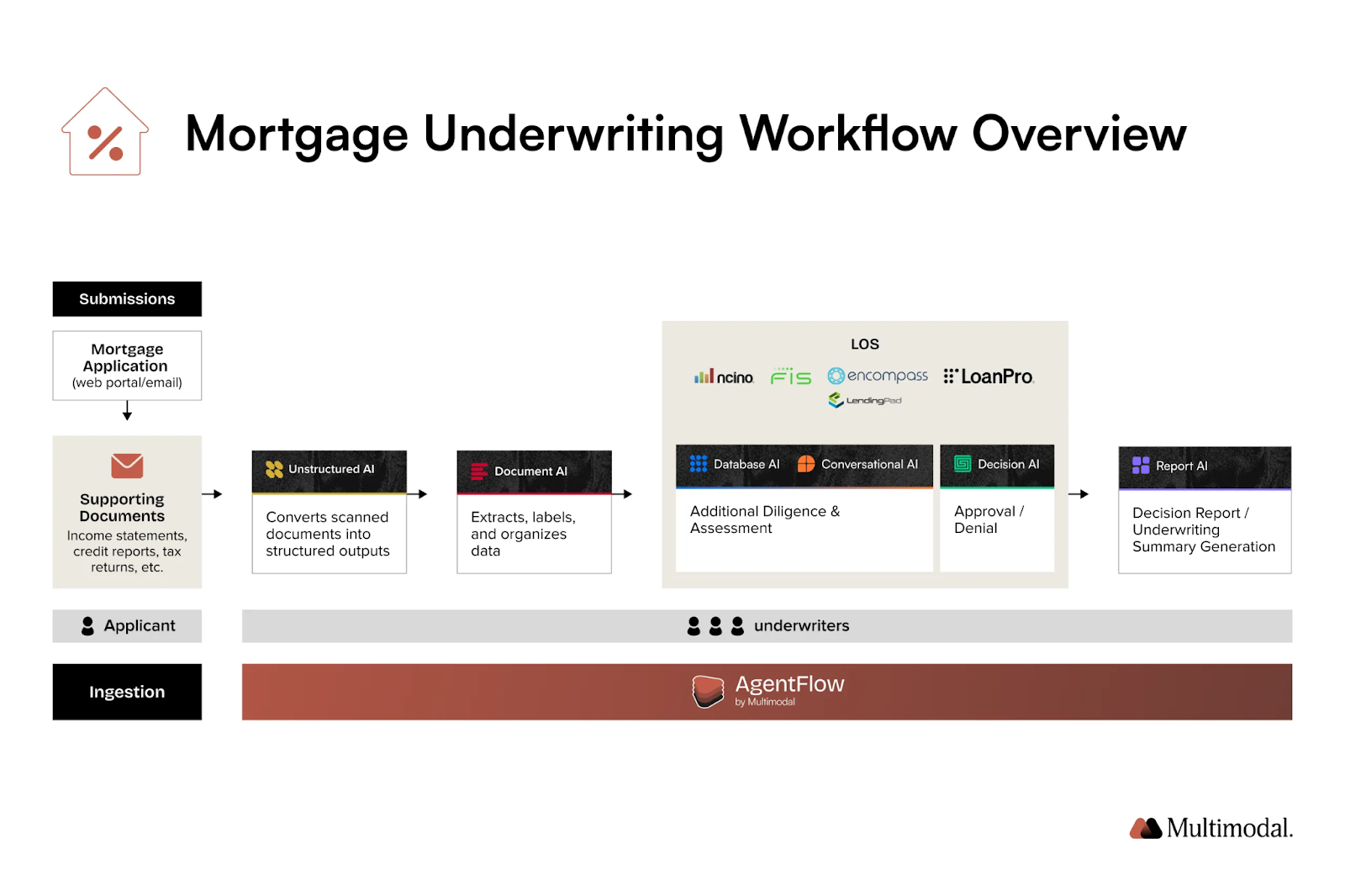This is a summary of an episode of Pioneers, an educational podcast on AI led by our founder. Join 3,000+ business leaders and AI enthusiasts and be the first to know when new episodes go live. Subscribe to our newsletter here.
TL;DR:
- AgentFlow simplifies the adoption of AI Agents in finance and insurance by abstracting away technical complexity and embedding compliance, explainability, and auditability from day one.
- Unlike generic tools, AgentFlow is tailored for regulated industries, offering modular building blocks to automate end-to-end workflows like lending or claims processing.
- Enterprises benefit from lower total cost of ownership by layering AgentFlow on top of existing systems rather than replacing them entirely.
- Businesses can iterate quickly by training agents on custom workflows without requiring massive engineering teams or deep AI expertise.
- The orchestration of AI Agents, human input, and third-party APIs enables faster decisions, especially in time-sensitive use cases like loan origination.
Before we dive into the key takeaways from this episode, be sure to catch the full episode here:
Meet Mora - Product Manager and Customer Success Lead at Multimodal
Mora Freire, product manager and customer success lead at Multimodal, combines her expertise in AI, automation, and enterprise workflows to help businesses embrace intelligent agents with confidence.
Prior to Multimodal, Mora worked at the intersection of AI and automation, helping companies operationalize intelligent systems to drive efficiency and transformation. At Multimodal, she led the buildout of AgentFlow from the ground up—translating complex regulatory requirements into user-friendly tools that deliver real impact.
Her approach focuses on solving real pain points: enabling teams in banking and insurance to adopt AI Agents without sacrificing compliance or scalability. Through hands-on customer work and iterative development, Mora empowers organizations to deploy AI across even their most complex workflows.
Why We Built AgentFlow: The Pain Points in Regulated Workflows
AgentFlow was built to address a unique and often overlooked gap: the difficulty finance and insurance companies face when trying to adopt AI for complex workflows.

Despite the excitement around AI Agents, many businesses feel overwhelmed by implementation.
Strict compliance requirements, legacy systems, and the need for explainability make deploying AI in these industries especially challenging.
Ankur Patel and Mora Freire emphasize that simply layering AI onto existing systems doesn’t work. Instead, what's needed is a solution that integrates compliance, security, and auditability from the ground up.
"AgentfFlow automates tasks in a way that aligns with business rules and strict regulations." — Mora Freire
AgentFlow was designed not just to automate tasks but to do so in a way that aligns with internal rules, external regulations, and enterprise-level workflows—making AI adoption feasible and valuable in regulated environments.
Beyond Generic Tools: How AgentFlow is Tailored for Regulated Industries
AgentFlow isn’t just another AI platform—it’s purpose-built for the specific needs of finance and insurance companies.
Most AI tools are too generic or require extensive customization to handle industry-specific requirements.
In contrast, AgentFlow embeds critical features like explainability, audit trails, confidence scores, and info-sec controls directly into its architecture. Mora explains how this tailored approach resonates with enterprise customers who are wary of high customization costs and technical overhead.
The flexibility to work with various tech stacks while delivering out-of-the-box capabilities means businesses don’t need massive engineering teams to see results.
AgentFlow simplifies the complexity while still honoring the strict operational, compliance, and regulatory standards that define these industries—unlocking a new path to automation and intelligence.
From Finance to AI: Ankur’s Insider View of Industry Challenges
Ankur Patel brings a unique perspective to building AgentFlow, having spent over a decade inside the finance industry at firms like JPMorgan, Bridgewater, and his own hedge fund.
His transition from finance practitioner to AI startup founder allowed him to see both sides of the equation. He understands firsthand how hard it is to implement change within highly regulated, risk-averse environments.
Ankur’s experience revealed the friction between what AI can do in theory and what’s actually possible in a production finance environment.
That’s why Multimodal prioritized features like auditability, info-sec, and model transparency.
Every design decision in AgentFlow is informed by his deep knowledge of financial workflows, compliance pressures, and the organizational inertia that often stifles innovation from within.
What Makes AgentFlow Different From Traditional Automation Tools
Traditional automation tools like RPA and IDP can be effective for narrowly scoped, well-defined tasks—but they often fall short in handling dynamic, multi-layered workflows.
AgentFlow goes beyond simple automation by introducing intelligence, adaptability, and agentic decision-making. Rather than ripping and replacing existing tools, it integrates with them via API, expanding capabilities without disrupting what already works.
For underperforming systems, AgentFlow can replace them entirely with a more capable, AI-driven solution.
What sets it apart is the ability to handle ambiguity and complexity in decision-making, while still allowing for human supervision where needed.
Mora and Ankur make it clear: this isn’t automation for automation’s sake—it’s an orchestration engine that intelligently distributes work between AI Agents, human experts, and third-party tools.

Under the Hood: How AgentFlow Works
Underneath its user-friendly surface, AgentFlow is a robust orchestration platform designed to manage complex workflows.
It gives businesses the ability to configure AI Agents using modular building blocks that define how work gets done—be it document classification, data extraction, decision-making, or generating reports.
Customers can choose their hyperscaler (AWS, Azure, GCP), select approved foundation models, and define workflows tailored to their compliance and business rules.
"Our customers don’t need a massive technical team to scale AI workflows anymore." — Mora Freire
The platform is intuitive enough for business users but powerful enough for IT and engineering teams to deeply customize.
Mora explains that AgentFlow is built to handle tasks that go far beyond simple prompts. Its architecture supports explainability, confidence scoring, and progressive improvement through fine-tuning. It’s this thoughtful blend of usability and rigor that sets it apart.
Real-World Wins: How Lenders Are Using AgentFlow Today
Lending is one of the most compelling real-world use cases for AgentFlow. Ankur outlines how the platform streamlines the entire underwriting process—from document classification and data extraction to credit ratio calculations and automated decision-making.

AI Agents verify whether required documents are present, notify borrowers when something’s missing, and even prepare credit assessments aligned with a lender’s unique criteria.
This drastically reduces the time to quote, which is crucial in competitive lending markets.
"The lender who gets the first quote out wins. AgentFlow helps make that happen." — Ankur Patel
By automating initial review stages and surfacing high-confidence decisions to human underwriters, AgentFlow compresses loan turnaround times and improves operational efficiency.
The result?
Lenders can scale their decisioning without compromising accuracy or compliance—making AgentFlow not just a tool, but a revenue accelerator in financial services.
Getting Started: The Path From Pilot to Production
For companies considering AI Agents, the journey often starts with uncertainty. AgentFlow’s implementation path is designed to reduce friction:
- Businesses typically begin with a pilot or POC focused on a specific workflow, like lending or claims.
- The first month is spent configuring the software to the company’s data, processes, and compliance needs.
- Months two and three involve iterative training and fine-tuning of AI Agents in partnership with the customer.
- By the end of the 90-day pilot, teams have a working solution that can go into production with minimal lift.
Mora emphasizes that the onboarding process is collaborative and doesn’t require heavy engineering support. Whether a company is just starting with AI or has an immediate use case, AgentFlow meets them where they are—and accelerates their path forward.
The Future of AI Agents in Regulated Industries
The future of AI Agents is rapidly evolving, but as Ankur points out, businesses don’t need to wait for the next big breakthrough to start seeing value.
"The goal isn’t more tools—it’s an application layer that gets you to value faster." — Ankur Patel
Foundation models and AI Agent frameworks are already powerful enough to transform regulated industries—it’s the deployment and governance that are the true barriers.
That’s where AgentFlow shines: it’s designed to make experimentation easy, scaling intuitive, and compliance built-in.
As AI Agents become more capable, the real opportunity lies in orchestrating how they interact with humans and systems in a secure, auditable way.
The next frontier is not just better models, but better adoption frameworks. And AgentFlow is leading the charge by making it possible to deploy AI in a way that’s both smart and safe.
.svg)
.png)


.svg)
.svg)

.svg)



